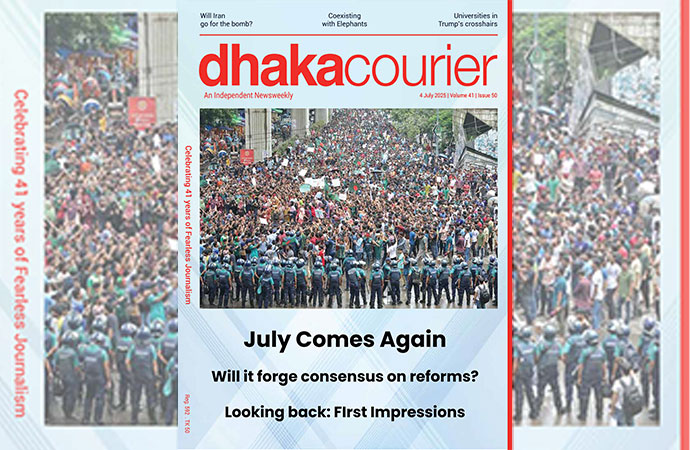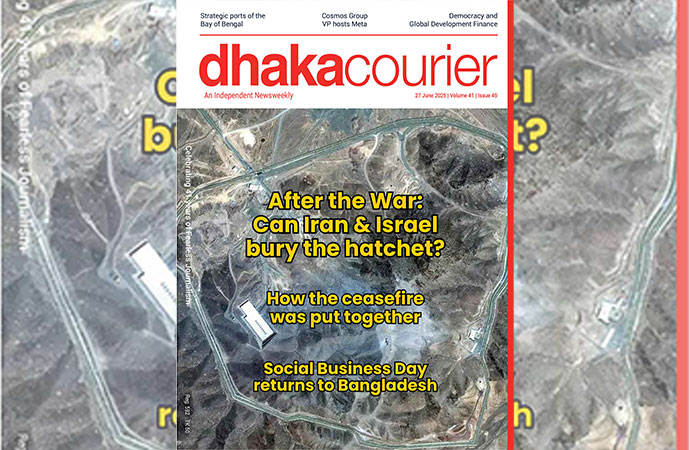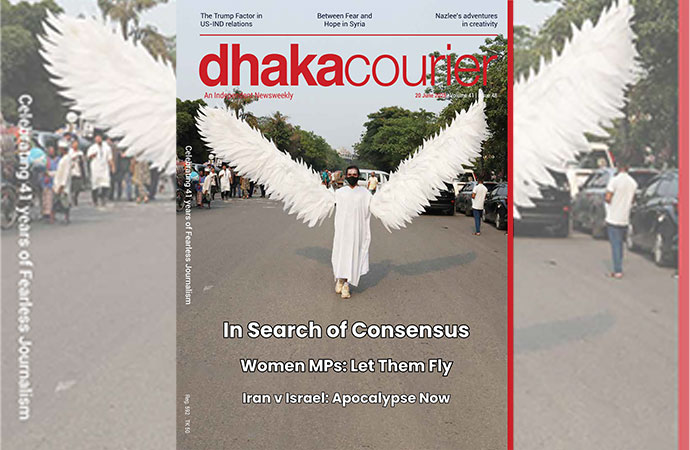Reportage

Aftermath of the attack on the temples out by unidentified miscreants in a Khulna village on Saturday, August 7, 2021 Photo: Courtesy
"What is your religion?" - this peculiar (yes it feels peculiar when asked within seconds into being introduced to someone) question followed me all through my life as my two names are pure Bangla words while my surname is a common one used by people of different religions. I always wondered why knowing someone's religion was so important. I could be a non-believer with the most "religious" name and vice versa. "Who gave you this name?", "How religious are you?" these were some other odd questions that bugged me along with the worst one being, "Why does your name sound like that if you were born into Islam?"
But I have stopped shrugging my shoulders and shaking my head in disgust as instances of intolerance towards any religion other than Islam (our state religion) has become as common as breathing in Bangladesh. Pictures of headless statues of Hindu gods and goddesses have once again swamped the mainstream and social media.
On August 7, four Hindu temples, at least 10 idols of gods and goddesses, six shops, and two homes of the local Hindu community were vandalised in an attack carried out by miscreants in a Khulna village. Any concrete reason behind the attack is yet to be officially stated but it "may have" taken place because some Hindus were singing "Kirtan" (a devotional song) while on their way to a temple. Unfortunately, that very hour happened to be the time of Esha prayers, according to newspaper reports.
Earlier in March, several hundred supporters of Hifazat-e Islam attacked, vandalised and looted at least 75 Hindu houses in Sunamganj's Noagaon village over a Facebook post.
Jhumon Das Apon, who made the post criticising Hifazat leader Mamunul Haque was among others, detained under the Digital Security Act and is yet to be released despite demands raised in written statement by 24 eminent citizens. Here, another point should be noted that the attackers not only vandalised the homes because their leader was criticised in a Facebook post by one Jhumon, but also vandalised several idols and looted valuables from those houses in that village.
The "Hifazat" (Protection, if translated from Urdu to English) hardly stands up to its name when in action. It has been making the headlines for quite some time now by its myriads of violent activities and abominable demands but one in particular mentioned in the "2020 Report on International Religious Freedom" will leave even those emotionally inept in despondence.
The report released by the US Department of State mentions an incident that took place in Brahmanbaria in July last year when local residents exhumed the body of an Ahmadiyya Muslim infant buried in a government graveyard and later dumped the body at the side of the road. The protesters considered her family to be "infidels"; the body was later buried in a government cemetery.
Human rights groups termed the incident a "crude example of violence against religious minorities and abuse of human rights," reads the report, which describes the status of religious freedom in every country.
There are many Ahmadiyyas living in different parts of Bangladesh. The Islamist groups, Hifazat-e Islam - a Qawmi madrasa-based organisation formed with leaders of Islamist parties - being one of them, do not recognise this community as Muslims and often stage demonstrations to banish them.
Violence against religious minority is not the result of people taking their opinions to Facebook rather it is the hatred stemming out of a deep-seated sense of superiority that comes with blind faith and a lack of education. Even amid the coronavirus pandemic, the country saw 17 deaths, 30 cases of rape and torture within seven months stretching from March to September last year, according to Bangladesh Hindu, Buddhist, Christian Unity Council and Bangladesh Minority Watch.
Their study carried out on the persecution of religious minority community throughout the year 2020 mentions that 37 idols were smashed, 23 temples were attacked, vandalised, and set afire, 26 houses were evicted, five religious institutes were taken over, 60 families were forced out of their villages, and four people were threatened to convert while seven others were forced to convert.
As many as 88 houses and business institutions were vandalised and looted as 247 individuals were physically assaulted and four others detained over complaints of making "negative remarks" on religion, the report stated.
Speaking of negative remarks, I cannot help mentioning about the videos of waz mahfils, where anyone clad in "sunnoti lebas" takes pride in vilifying all the Hindu gods, particularly Durga, that too on the eve of Durga Puja, the biggest religious festival of the Hindus. These videos, which can unquestionably hurt the religious sentiments of the Hindus, are not only derogatory towards the said religion but also women in general.
Although at the beginning of this year, Monirul Islam, chief of the Counter Terrorism and Transnational Crime unit of police, said they would keep an eye on waz mahfils to identify those delivering indecent speeches, such provocative sermons are still largely available on YouTube. They are being shared indiscriminately on Facebook, the nation's favourite platform to loiter around these days.
An oppressed minority community are usually at the root of any form of riots and turmoil. At this is point a redesigning of the country's educational curriculum, particularly at the primary level, feels crucial where children will be attuned to the values of communal harmony. I want to wind down by recalling a statement of a seasoned Bangladeshi actress. She once told on a radio show that children in our schools read novels of all writers from home and abroad, they read theories of all social scientists, they do equations, geometry invented by different mathematicians. Then why not introduce them to all the religions?
Promiti Prova Chowdhury is a journalist. She can be reached at promiti.chowdhury@gmail.com

























Leave a Comment
Recent Posts
‘Married to Journalism’: Adieu ...
The journalist community of the country united this week in bidding go ...
Reimagining the OST: ‘Utshob’ ...
One of the most successful Bangladeshi films in recent years, 'Uts ...
Harrowing stories of rescue emerge from Texas floods ..
The Resilience of World Trade
Heeding the Lessons of India’s “Emergency”
Sunamganj’s age-old boat market struggles as monsoon ..